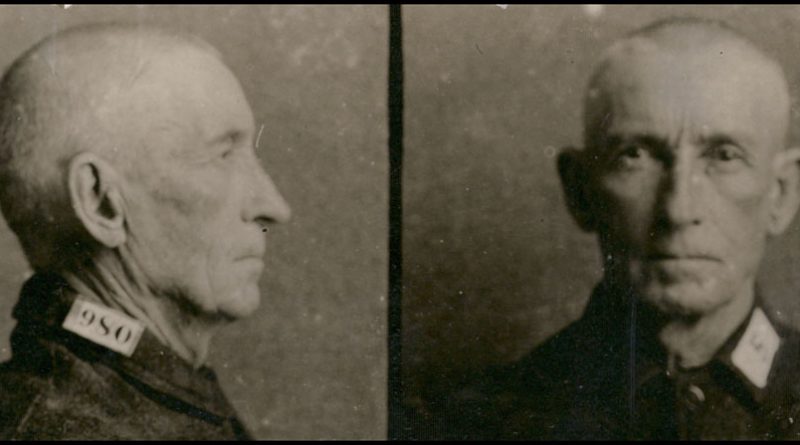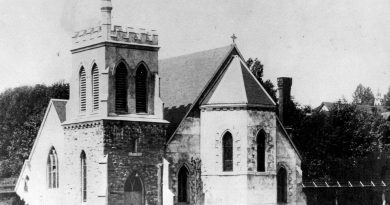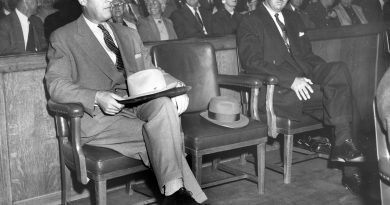The Grey Fox
Bill Miner, the man who committed Canada’s first train robbery, was unfailingly polite as he stuck up his victims. That earned him a description as “the gentleman bandit,” and it may have been his success in escaping prison that led to his being remembered as the Grey Fox.
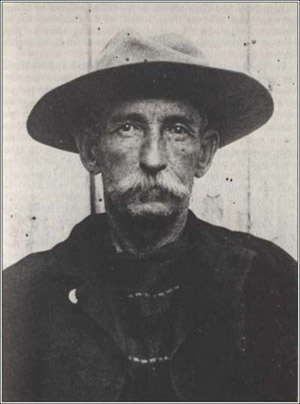
Greg Dickson, the co-author with Mark Forsythe of The B.C. Almanac Book of Greatest British Columbians, gave a fascinating talk to the Vancouver Historical Society some time back on the curious (and ultimately pathetic) career of the Grey Fox. Greg’s interest in Miner was a long-standing one: he’d first heard of this celebrated thief as a boy of 12 in Keremeos, when he saw a display of old photographs by Kamloops photographer Mary Spencer. She had snapped off mugshots of Miner and the members of his gang shortly after they’d been captured for a robbery in the area.
Getting captured was a constant in Miner’s life: he spent a great deal of it behind bars.
Good as it was, Greg says, the 1982 movie The Grey Fox played fast and loose with the facts of Miner’s career. He just wasn’t very good in his chosen line of work.
He was born December 27, 1846 in Onandaga, Michigan as Ezra Allen Miner. (Another source says he was born in 1847 in Bowling Green, KY, and his birth name was McDonald.) By age 16 he was stealing horses, at 17 he joined the Union Army during the Civil War (but deserted after a year), at 18 was back to stealing horses . . . and watches and money from his employer. His first conviction came in 1866 and he was sent off to San Quentin for a year.
“He almost always ended up in jail,” Greg said. “But,” Miner once said in his defence, “I never robbed the little guy.” “Well,” Greg replies, “the record reads a little differently.”
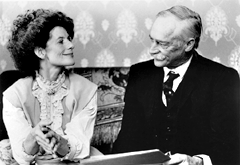
Miner never worked alone, always had a coterie of younger, dimmer cohorts. He was a bit of a swell, liked “fancy duds,” spread money around when he had it, and would not refuse the attentions of young ladies—although he did desert one he had married. Miner was genuinely charming and polite, even during his robberies, hence his title of the “Gentleman Bandit.”
His politeness while robbing a California stagecoach of $3,000 (a lot of money for the time) didn’t help him when he was caught and charged. The sentence: 25 years in San Quentin. There he was occasionally attacked by knife-wielding fellow prisoners, and occasionally wielded a knife himself. Nobody ever accused Bill Miner of being a wimp.
He was 55 when he got out, having spent (so far) 33 years of his life in jail. Not long after his release, following two unsuccessful attempts near Bellingham to rob trains, he fled into Canada. A lady named Amelia Alice McDermott, who knew him in Princeton, later wistfully recalled him as having a “kindly and courteous disposition,” and added that he was “a good fiddler and a good dancer.” He was calling himself George Edwards at the time.
On Saturday, September 10, 1904 Bill Miner and his gang du jour robbed a CPR train at Mission. It was Canada’s first train robbery, and we were thrilled by it. Greg Dickson thinks it possible that Miner knew Morse code, the means of train communication at the time, and may have known what the train was carrying. “This was the most successful robbery in Miner’s career,” says Greg Dickson, “and one of the better planned. He even had a boat waiting.”
There’s a dispute over what he got away with. Some estimates put it at $7,000, and some go all the way up to $300,000 in bonds. (One theory is that the CPR wanted the amount kept unknown to preserve the railway’s reputation.) Whatever the amount, Miner was flush enough soon after to show a lady friend a wad of money that included a $1,000 bill. The lady later recalled that he was also packing two guns.
His success was short-lived. A 1906 train robbery in B.C. netted the gang “$15 and some liver pills.” And they lost their horses during the heist. And by now everyone was hot on his trail: the Pemberton Detective Agency was after him, so was the Field Detective Agency and a Calgary contingent from the Northwest Mounted Police.
They caught him, of course (near Douglas Lake) and he ended up in the B.C. Pen in New Westminster. He escaped from there within a year and hurried back into the States . . .
Where he started robbing trains again. Or tried to. During one of his flights from the authorities, desperate with thirst, he drank some swamp water. It made him ill, and his capture followed swiftly. He died in prison in Georgia in 1913 and the locals paid for his funeral.
His was a full life, just not a particularly successful one.
One fascinating artifact that Greg showed at the talk was the set of leg irons used to hobble Miner during his arrest in Canada. They’ve been preserved and are held in the Vancouver Museum.

